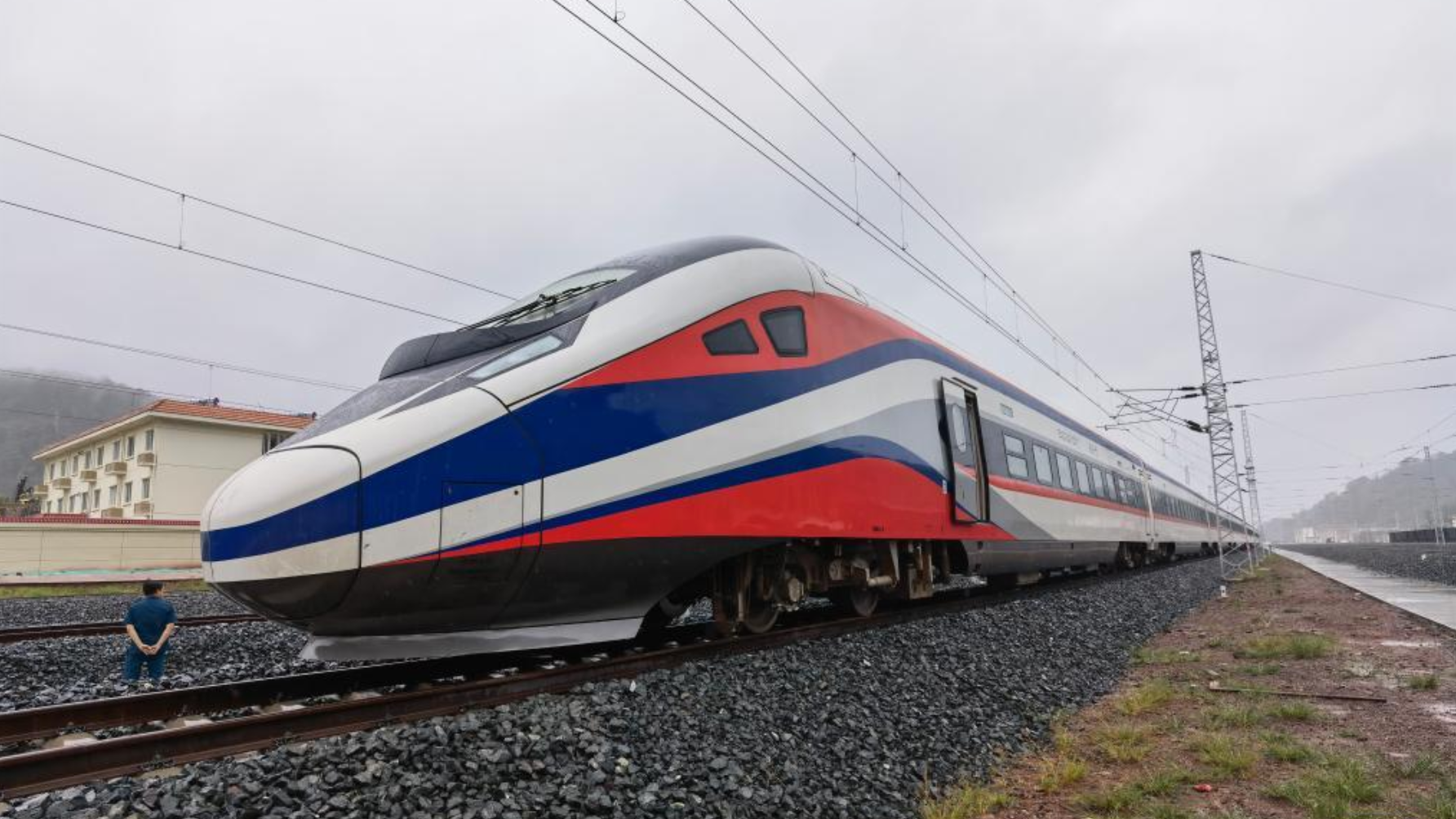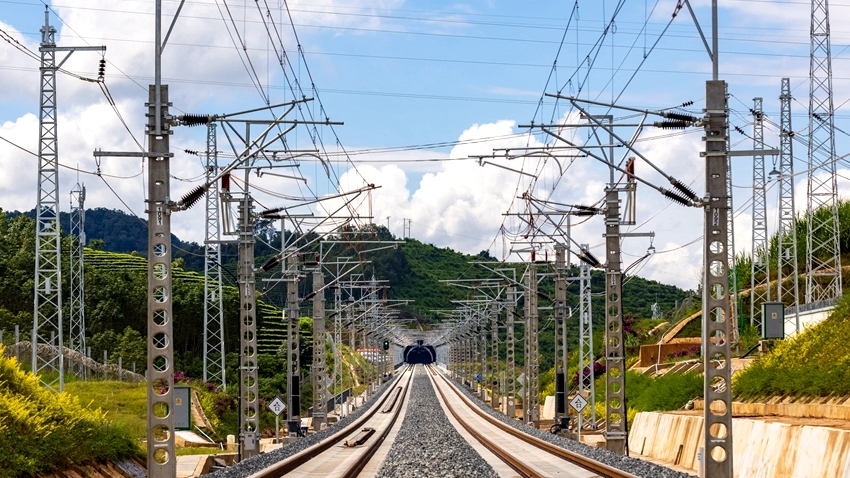
The Lane Xang EMU train arrives at the northern Laos' border town of Boten, after passing by the China-Laos borderline, October 15, 2021. /Xinhua
The Lane Xang EMU train arrives at the northern Laos' border town of Boten, after passing by the China-Laos borderline, October 15, 2021. /Xinhua
Editor's note: Lee Pei May is an assistant professor at the Department of Political Science, International Islamic University Malaysia. The article reflects the author's opinions and not necessarily the views of CGTN.
Being geographically disadvantaged due to its landlocked position, Laos is one of the least developed economies in the region. In 2019, before the pandemic outbreak, its GDP per capita was approximately $2614, and the impact of the COVID-19 pandemic caused its GDP per capita to drop slightly to $2551 in 2021. To put things into perspective, Laos, a landlocked country, has a GDP per capita 4 times lower than Malaysia, a coastal country.
As such, the Laotian government sees the only way to pursue development is to transform itself into a land-linked country. Despite that, for more than two decades, there was little progress. Laos continued to lack the connectivity and accessibility that can spur growth. The unrealized land-linked strategy promoted by the Laotian government took a better turn when China proposed the Belt and Road Initiative (BRI) and encouraged countries to be its BRI partners.
The Lao government jumped in at the opportunities and managed to secure loans from China for the China-Laos Railway project under BRI. The megaproject is a testament that China is determined and sincere in offering help to the Global South in its pursuit of development. Thanks to the loan from the Export–Import Bank of China, it was possible for Laos to have the railway because of the enormous capital needed to complete the project.
The willingness of China to finance infrastructure development in developing countries comes from its own developmental experience. Chinese leaders always prioritize infrastructure development and see infrastructure building as the precondition for development. Based on its own successful experience, China wishes to help other countries grow by giving loans and sharing expertise because China firmly believes that we are a community with a shared future and that our destinies are closely linked with one another.

A section of the China-Laos Railway in Xishuangbanna Dai Autonomous Prefecture, Yunnan Province, China, September 28, 2021. /Xinhua
A section of the China-Laos Railway in Xishuangbanna Dai Autonomous Prefecture, Yunnan Province, China, September 28, 2021. /Xinhua
In December 2021, the people of Laos were overjoyed as the China-Laos Railway project was completed. The new railroad coupled with existing railroads offers much-needed connectivity and accessibility for Laos to other countries, particularly China. This interconnectedness could be translated into tangible benefits for Laos, as Laos is now connected to the largest market in the world – China – and the markets of other ASEAN members. As the economies of Laos and China become much more integrated, people and goods could move much more easily across borders, leading to deepening cooperation between the two countries. As such, the new railroad enables the economies of Laos and its neighboring countries to complement each other and improve supply chain efficiency.
As of early November this year, the railway has transported more than 10 million metric tons of freight across borders and logistics costs from the capital city of Laos, Vientiane, to Kunming of China, are estimated to drop by about half. These considerable savings in transportation costs will benefit small and medium-sized enterprises (SMEs) the most. SMEs are the pillar of the economy in many countries, including Laos.
According to International Labor Organization, SMEs in Laos accounts for more than 80 percent of the total employed by registered firms and have played a vital role in assisting the government in eliminating poverty. SMEs in Laos could take advantage of the cheaper freight train service (compared to airfreight) and reduced travel time (compared to seafreight) to expand their market domestically and internationally to China and other ASEAN countries.
In 2020, the intra-ASEAN total merchandise trade accounted for 21.2 percent. Though the number is promising, ASEAN members believed there was room to promote strong intra-ASEAN trade and investments further. The arrival of the China-Laos Railway project lends itself well to boosting intra-ASEAN trade and investments. For example, Thailand has used the China-Laos Railway to transport tons of rice, durian and natural rubber to China. In addition, Thailand plans to build a logistic center by 2026, which would boost the use of the China-Laos Railway. It is hoped that the positive spill-over effects of the railway project could alleviate poverty in Laos through growing trade, investment and tourism. As of 2019, the poverty rate in Laos stood at 18 percent.
Within Laos, the railway links many cities, including the countryside, allowing these less-developed areas to share the fruits of development through this newfound connectivity. By promoting agrotourism, farmers expect to receive tourists in tens of thousands seeking to enjoy their farm stay. The increase in tourist numbers would lead to job creation. The first 10 months of this year saw more than 300,000 tourists arrive at Luang Prabang Province of Laos using China-Laos Railway, and the number is expected to increase as infections caused by COVID-19 gradually wane.
At present, we may not be able to fully appreciate the benefits of the China-Laos Railway. But as all activities resume to the pre-pandemic level, the economic benefits the railway brings will be more evident. In the long run, the railway could truly transform the lives and livelihoods of ordinary people of Laos and propel the country's growth.
(If you want to contribute and have specific expertise, please contact us at opinions@cgtn.com. Follow @thouse_opinions on Twitter to discover the latest commentaries on CGTN Opinion Section.)